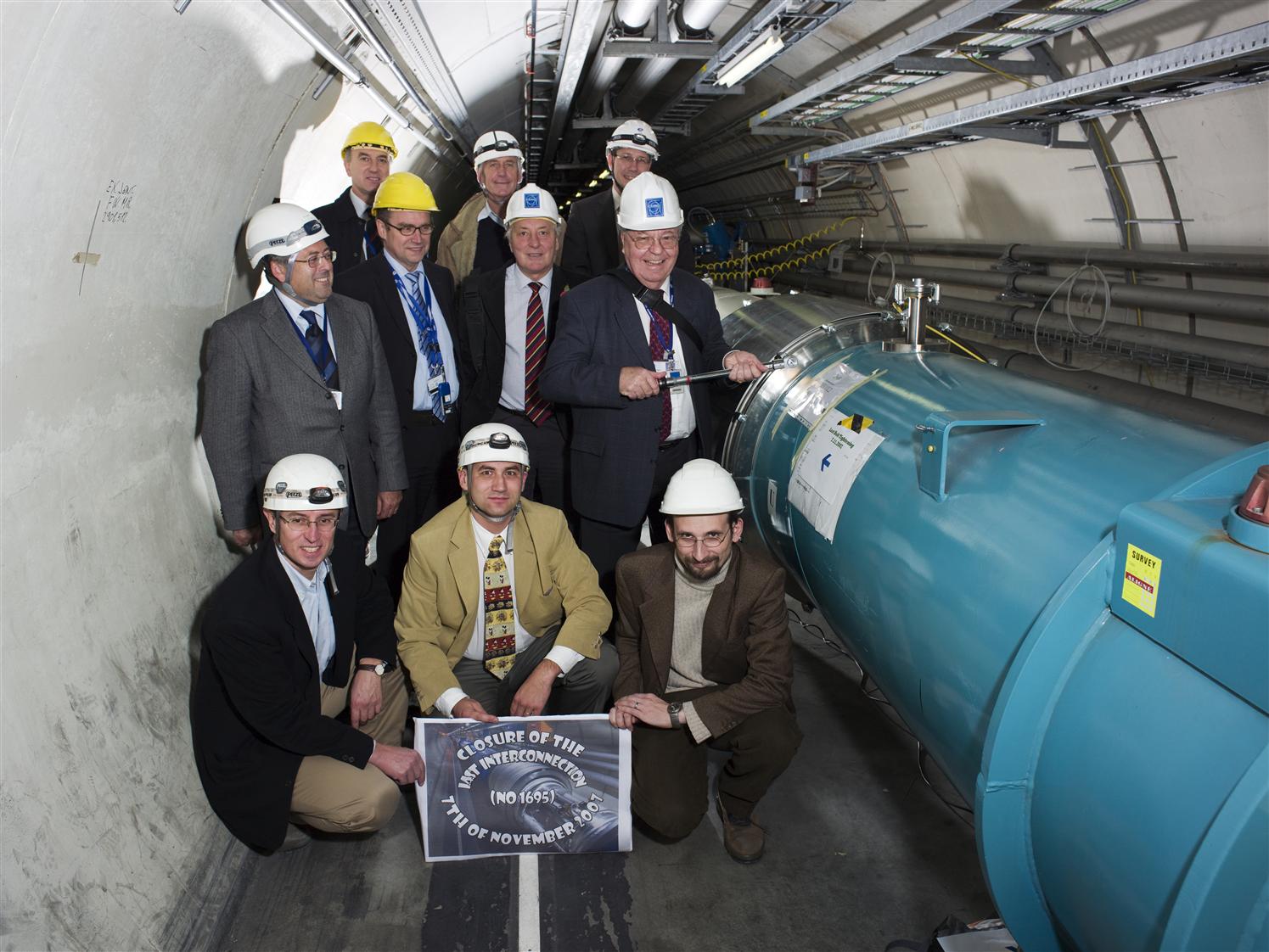Connecting the dots
The last arc interconnection of Sector 1-2 was completed on Wednesday 7 November, marking the end of a huge project to connect up the LHC.
On Wednesday 7 November, deep in the tunnel, CERN Director-General, Robert Aymar, tightened a special gold-plated bolt, the last in Sector 1-2, signifying the completion of all the arc interconnections of the LHC. This is a huge milestone for the project, and symbolises how close it is to being ready for start-up. Once the last interconnection was closed, people congregated in the Globe to congratulate and thank the hundreds of people who had worked on the project.
The final bolt of the last interconnection of the LHC arc sections, symbolically tightened by CERN Director General Robert Aymar.
The scope of the task was enormous, and the achievement, in Lyn Evans’ words, is astonishing. On the same date last year just one sector, 7-8, had been completed, but now all eight are ready: "It’s a tremendous achievement. For me, the hard part is done. Many people thought we couldn’t do it, but we’ve done it."
All in all, around 1700 magnets have been connected together, requiring a total of about 65,000 electrical ‘splices’ of superconducting cables and 40,000 (10km worth!) of leak-tight welds performed under tungsten inert gas to protect the weld pool from oxidation. High quality is essential: a leak discovered in the cryogenic system or a fault in an electrical line once the sector is cold would mean time-consuming and expensive warming-up to fix it.
The surge in production came from an organised coordination effort that involved working in parallel on up to six sectors at the same time with tight changeovers between teams, including quality inspections and vacuum and electrical testing. To ensure that quality problems could be solved as quickly as possible, CERN staff even installed a call centre that was always open to deal with problems as they arose. "A critical part in increasing efficiency was removing obstacles to allow the contractors to do their job," explains Francesco Bertinelli, interconnections project leader. By taking on the "special" interventions and repairs, CERN technical staff allowed the IEG consortium to focus on the large-volume activity, enabling the work to progress as fast as possible.
And, of course, sheer dedication got much of the work done: "There are a number of people who have dedicated the last few years to this project without much regard to their personal schedule or clock," explains Francesco. At the peak of activity 200 people were working on the job, with around half from the consortium and half from CERN.
Completion of an interconnection between magnets requires a complex sequence of activities and a range of expertise. The design and preparation work started years ago and was essential for the smooth running of the production phase. Several teams from different departments and groups and consisting of CERN staff , project associates from the CERN-HNINP Krakow collaboration and industrial staff had to learn to work together. "There was a constant, detailed CERN involvement and an excellent spirit of collaboration and respect between all teams," says Francesco.
Now the task remains to finalise joining the last ‘special’ sections together: where the beam is inserted, removed or guided to an experiment. When complete this will link up the entire ring. Of course, some "surprises" could lie ahead but, says Lyn Evans, "we can be confident since the teams have shown they can get together to face unexpected problems rapidly and efficiently."
Sector 4-5 is currently being cooled to 1.9K and the plan is to cool four other sectors by the end of the year. Once the team have carried out electrical and vacuum tests, Sector 1-2 will become one of these and the golden bolt will become just one of hundreds of thousands of interconnections that are essential to the running of the LHC.



